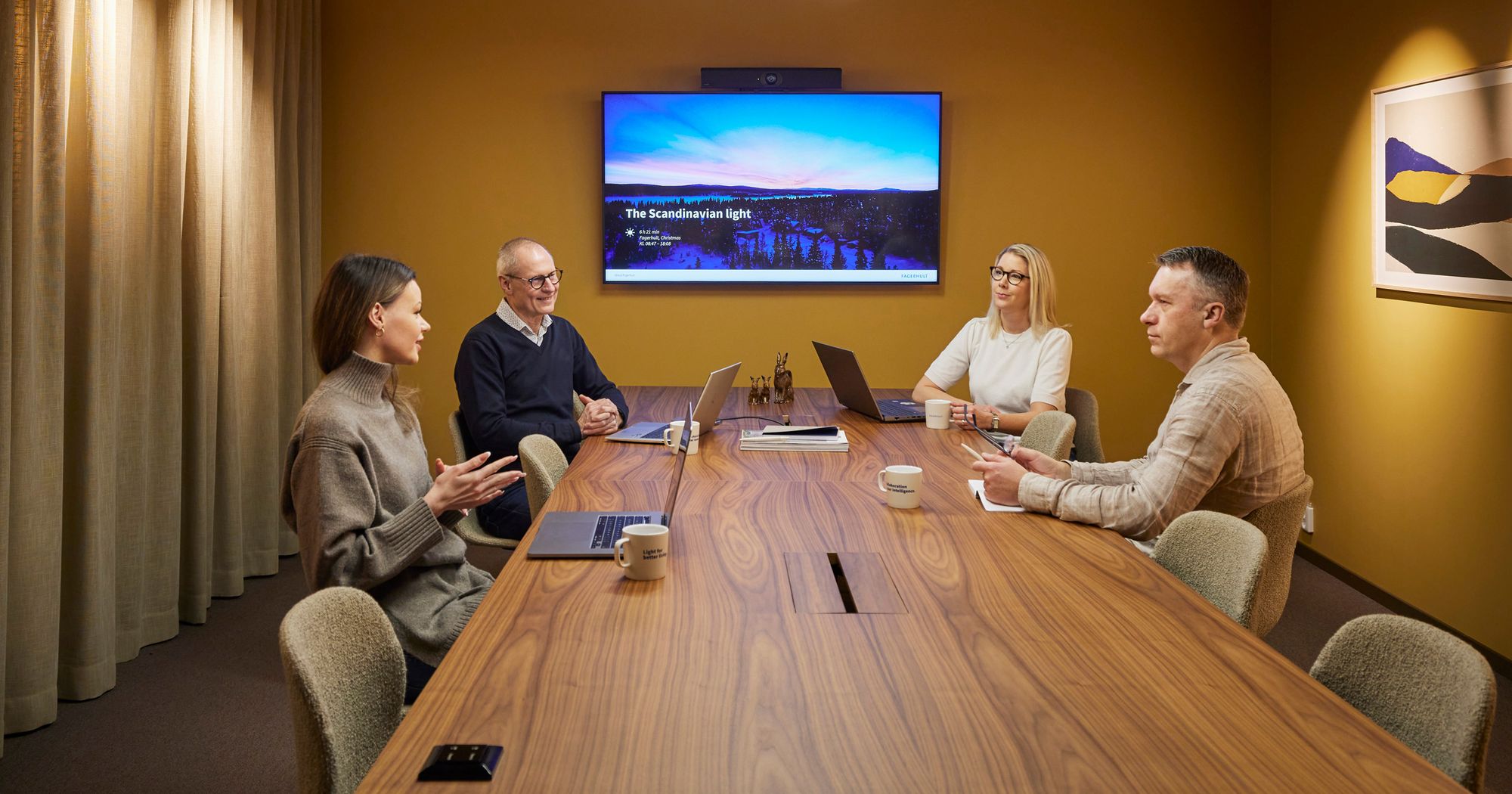Fagerhult’s guide to HCL
For those of us who work with light professionally, Human Centric Lighting sums up everything that makes lighting so enjoyable and meaningful. Fagerhult possesses the knowledge – and we are happy to share!

Every HCL project is individual – but here’s some good advice to help you on your way:
- The light distribution in the room should be well thought-out and offer good visual comfort, in line with the basic principles of light planning and applicable standards. It shouldn’t dazzle as a result of exposed light sources, excessive light levels, polished surfaces or overly sharp contrasts between horizontal and vertical surfaces.
- Human Centric Lighting requires variation, for example in the form of varied intensity and colour, which is created with the aid of the surfaces. But good lighting design also means that the light in the room varies in other ways. Illuminating the ceiling with indirect light, as well as the vertical surfaces – known as ambient lighting – serves to enhance the spatial experience and the variety. Accent lighting on selected objects or at certain points helps to create a vivid and inspirational environment.
- In order for our biological system to perceive and register the electric lighting as daylight, higher output levels are required. To achieve the right biological effect, approximately 250 melanopic lux must hit the eye directly (this is not the same as looking directly into a light source and being dazzled). Illumination of the face is also extremely important when it comes to our visual communication and dialogue with others.
- Energy-efficient luminaires incorporating the latest LED technology optimise the potential to reduce the carbon footprint and energy consumption, at the same time as providing new opportunities for advanced control based on people’s needs.
- Sensor control using daylight sensors and presence detectors make it possible to utilise the daylight and adjust the intensity and colour of the light with consideration for the visual, biological and emotional needs of the users. The illuminance and the colour of the light must be correctly balanced and varied depending on its purpose. Control is also a prerequisite for saving energy by making maximum use of the available natural light, as well as avoiding having the lighting turned on when no one is present.
Complex?
We will support you with expertise and comprehensive solutions, based on the project in question and your assignment. Our lighting guides contain examples of solutions for different environments, such as:
